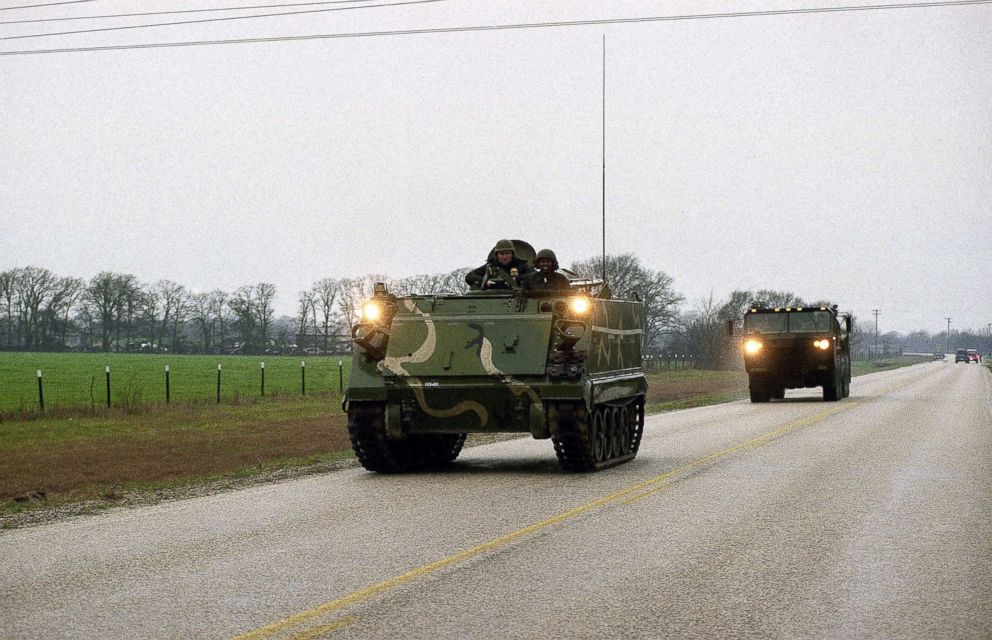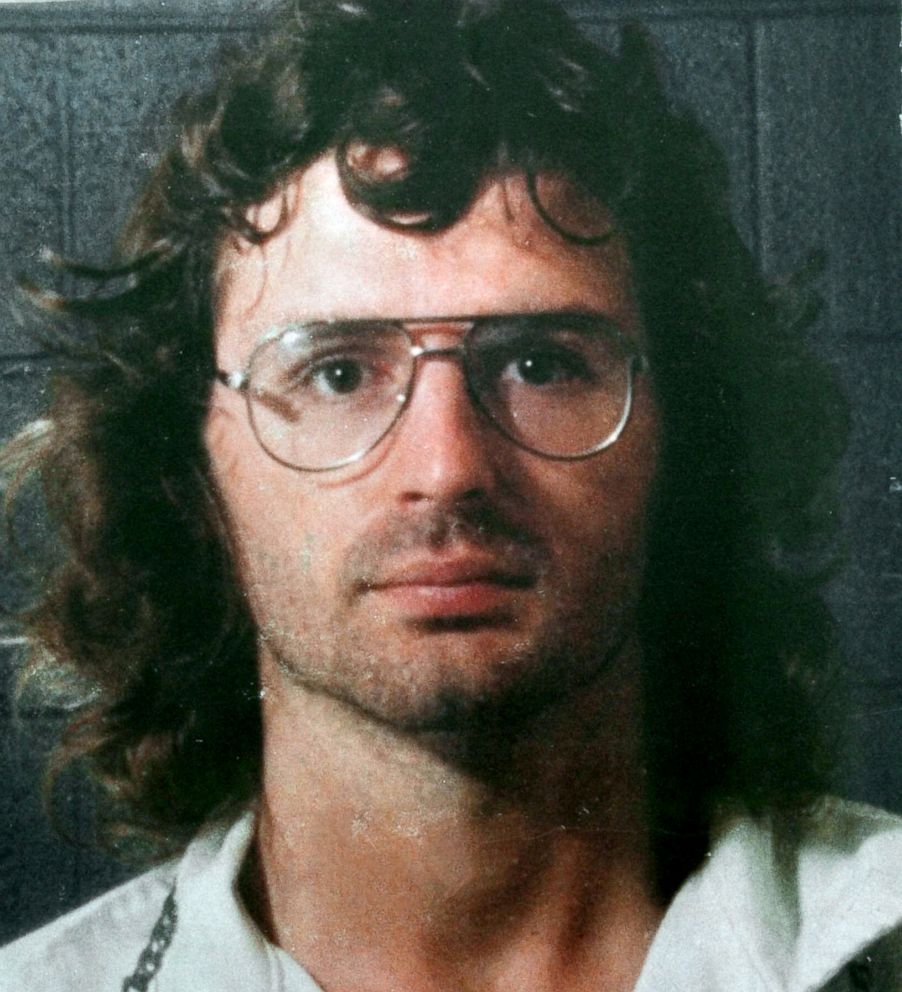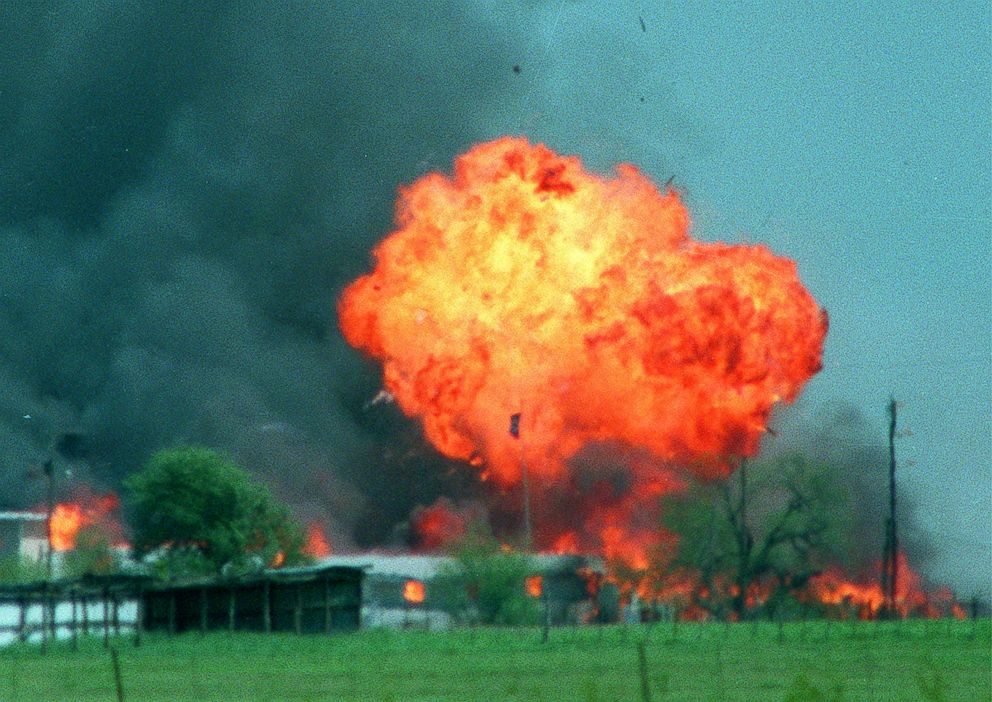ATF agents at fatal 1993 Waco raid describe being under barrage of gunfire
Four ATF agents were killed in the shootout with the Branch Davidians.
— -- “I remember it being a cold day,” said Robert Edler, a retired ATF agent. He’s describing the morning of Feb. 28, 1993 near Waco, Texas. It’s been nearly 25 years, and like most of the other agents, he’s never spoken much about that day to outsiders.
“I recall stepping out of the truck, and almost immediately I started hearing pops,” said Elder. “You know, ‘Pop pop pop.’”
Elder was one of 76 special agents from the Bureau of Alcohol, Tobacco and Firearms (ATF) serving a search warrant for illegal weapons at the Mount Carmel Center. Mount Carmel was home to over 100 Branch Davidians, an apocalyptic religious sect led by David Koresh. They had amassed an arsenal, including AR-15s, AK-47s and grenades, for the "end times."
There were a large number of women and children inside Mount Carmel.
“Prior to the raid, a lot of us went to the store and bought candy, just as a way to appease the kids,” said ATF agent Gary Orchowski. “A lot of the agents that executed that search warrant that day did view it as a humanitarian mission.”

Dubbed "Operation Trojan Horse," the ATF agents arrived that morning in covered horse trailers, and had hoped to find the Davidian men outside at work, cut off from their cache of weapons.
Instead, the Davidians had been tipped off and were lying in wait. The agents were walking into an ambush. Worse yet, ATF commanders knew that the element of surprise had been lost but proceeded ahead.
“Why the decision was made to go forward? I really cannot speculate on that ... other than the superiors felt like we could execute it,” Elder said. “And like a good agent, I followed orders.”
Roland Ballesteros was one of the ATF agents assigned to breaching Mount Carmel’s front door.
“I look up and I see Vernon Howell at the door,” Ballesteros said, referring to Koresh's birth name. “I was running straight at him, yelling at him, ‘Police, search warrant!’ He backed up and he shut the door.”
It's unclear who fired the first shots.
“All of a sudden I’m seeing just holes appearing in front of me,” said Ballesteros, referring to bullet holes coming out of the front door. “It’s like everybody starts shooting at once. You couldn’t hear anything.”
Shot in the thumb, Ballestros dove for cover.
“I felt my hand kick back,” Ballestros said. “I saw my thumb hanging back across my glove.”
He would lay in a dog kennel near the front door for the next three hours.
“You’re looking at mortality in the face and thinking like, ‘Damn, I’m not gonna get out of this thing.’”

ATF agent Bill Buford was leading a team onto the roof where they sought to enter the compound through a second-floor window.
“There was a lotta rounds coming by,” Buford said. “You could hear them zipping over your head.”
Buford’s team are the ATF agents seen taking fire on top of the Davidian roof in the famous news footage from that day. Buford actually gained entry to the compound before being wounded.
“They started shooting through the walls at us,” Buford said. “I took two AK rounds, one in my thigh and one in my hip. I remember falling down and trying to get up.”
Elsewhere, a Davidian on top of a water tower was shooting at agents below with an AR-15.
“I look up at that water tower,” Elder said. “The first thing comes to my mind is, this is a shooting gallery. I’m gone.”
The ATF agents were woefully outgunned.
“We were being shot at from anything from .22-caliber rifles to .50-caliber rifles,” said Orchowski. “One of the things that we did not have that day is enough long guns.”
Buford would escape the Davidian compound by crawling back out the window before falling to the ground -- breaking several ribs on impact. A medic began dragging Buford away before he was shot a fourth time.
“Rounds were hittin' all around my head,” Buford said. “And then finally one hit me across the nose.”

That's when Buford says his life was saved by a young agent under his command named Robert Williams. Williams started directing fire at the Davidian gunmen who were shooting at Buford.
“But in doing so, Rob showed him where he was,” Buford said, choking back tears. “And a few minutes later he raised up to shoot again and he was shot in the head and killed. He was about 10 feet from me.”
“He was a great kid,” Buford said. “Just the day before his 26th birthday and we had a big party planned for him the next day and everything. ... That really hurt.”
Four ATF agents would be killed in total -- Williams, Steven Willis, Conway LeBleu and Todd McKeehan. Numerous others were wounded. Five Branch Davidians were also killed in the shootout.
“We were hoping to be able to pull this thing off without injuring any children,” Buford said. “And all of a sudden we've got four of our guys dead and 28 of them shot up.”
Eventually -- after three hours of gunfire -- a ceasefire was negotiated between the ATF and the Davidians. The ATF scrambled to evacuate their dead and wounded.
“Pulling agents, dead agents, off the roof, going into the backyard, taking a wounded agent out of there,” Ballesteros said. “I just don’t understand what went wrong.”
The ATF was relieved of its command and the FBI took over operations at Mount Carmel. At the time, this was especially galling to the agents on the ground.
“It basically made a lot of us angry,” Ballesteros said. “We didn’t get to finish what we started. ... You don't think we’re good enough, you’re gonna bring in the FBI?”

The ensuing standoff between the FBI and the Davidians would last 51 days -- finally ending when the FBI launched an operation to remove the Davidians from their compound using tanks equipped with non-lethal tear gas. Officials say the Davidians responded by setting their home ablaze. Only nine survived the deadly fire, all others were killed -- approximately 80 in total, including around 32 women and 21 children.
The FBI received vast criticism, but it seemed a special contempt was directed at the ATF.
“[Some people said] we're a ruthless bunch of jackbooted thugs,” said Buford. “I've heard that term used many times in describing us.”
Elder says the public scrutiny drove him and other agents to bury the story of what happened on Feb. 28, 1993.
“It’s a topic that many in ATF for years did not want to talk about. Just, don’t talk about Waco. Don’t talk about Waco,” Elder said. “We’re coming up on the 25th anniversary. It’s finally time.
“ATF is a much better organization now,” Elder continued. “It’s important that people know that these agents sacrificed their lives trying to protect the public.”




